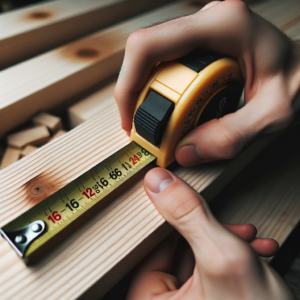The tape measure is an indispensable tool for DIYers, construction workers, and even the casual home improver. However, those little markings can often seem like a secret code. In this blog post, we’re going to demystify the markings on a standard tape measure, with a particular focus on reading in 16ths of an inch.

Part 1: The Basics of Tape Measure Markings
Tape measures typically come with a series of lines and numbers that represent different lengths. The longest lines are usually the inch marks, and as the lines get shorter, they represent fractions of an inch. The smallest lines on most tape measures represent 1/16th of an inch.

Part 2: Breaking Down the 16ths
Every inch on a tape measure is typically divided into 16 parts, each representing 1/16th of an inch. Here’s how to read them:
- The longest line is the full inch.
- Halfway between two inch marks (the second longest line) is the 1/2 inch mark or 8/16ths.
- The lines that are a quarter way between the inch marks are the 1/4 inch or 4/16ths and the 3/4 inch or 12/16ths marks.
- Lines that are shorter than the 1/4 inch marks but longer than the smallest marks are the 1/8 inch marks or 2/16ths and 6/16ths, 10/16ths, and 14/16ths respectively.
- The smallest lines are the 1/16th marks.

Part 3: Practical Tips for Reading in 16ths
- Start Simple: If you’re new to reading a tape measure, start by identifying whole inches and half inches before moving to smaller fractions.
- Count the Smalls: For measurements that fall between the longer lines, count the smallest lines to determine the number of 16ths.
- Reduce When Possible: Remember, 8/16ths can be simplified to 1/2, and 4/16ths is simply 1/4. Always look for opportunities to simplify your measurements.

